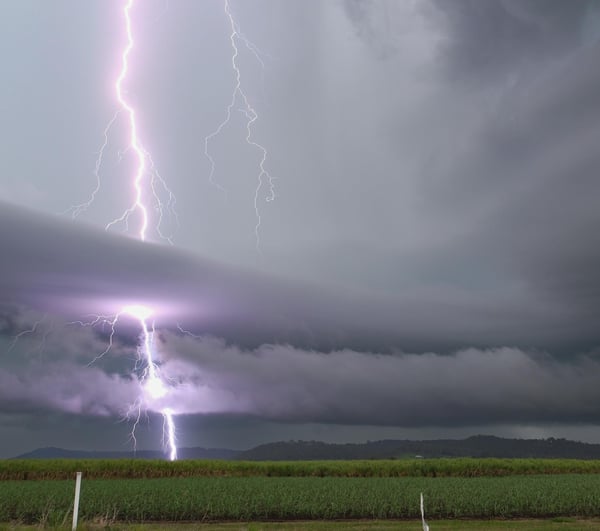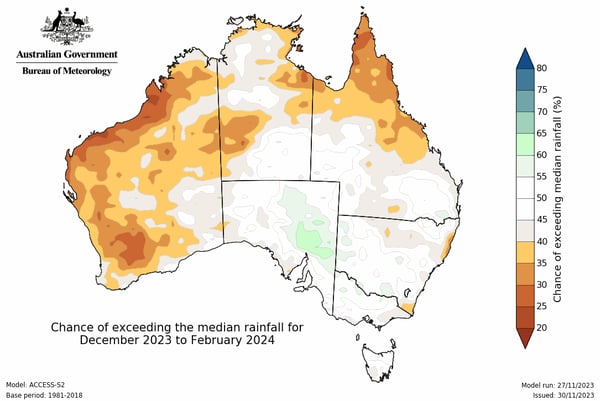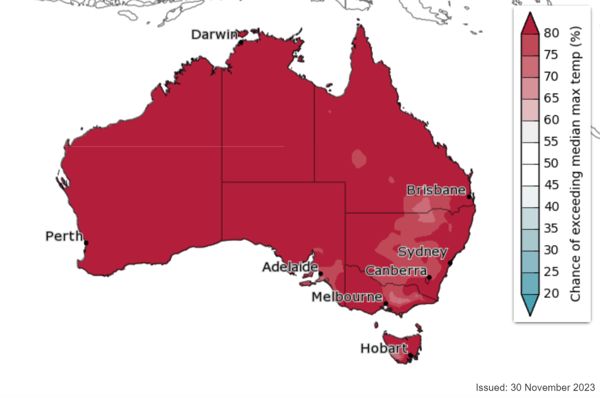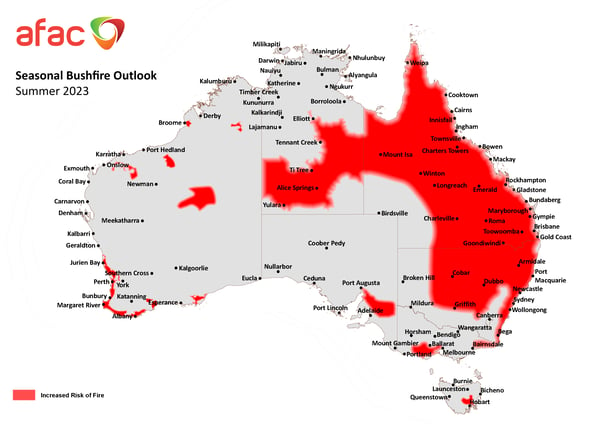While it may be hard to believe after this week's severe storms and flooding that have ravaged much of Australia's eastern states, the Bureau of Meteorology's 2023/2024 Summer Outlook tells a different story for the upcoming months. The BoM predicts a summer characterised by heat and scarcity of rain, a stark shift from the recent wet and tumultuous conditions.

Lightning strike near Grafton, NSW. Taken by EWN's James Harris 28 Nov 2023
Firstly though, why has it been so wet?
We have had sustained periods of inland troughs, coupled with slow moving high pressure systems over the Tasman Sea, which have been feeding persistent onshore winds and moisture into these troughs, producing prolonged periods of rain and storms. We've had no strong cold front to 'flush the moisture out' so to speak.
Whilst it is El Nino, the effects on rainfall tend to reduce from November onwards, contracting to mainly northeast Australia
The last couple of weeks in November bumped its monthly rainfall to 30% above average, the overall spring rainfall across Australia was around 23% below average. Some states had their driest springs on record, and temperatures were 1.7 °C above average. This has aided in severe bushfires through the Northern Territory, Western Australia, Queensland and New South Wales, with homes and businesses destroyed early in the bushfire season.
What is ahead for the Summer?
One of the standout features of this year's summer is the expected below-average rainfall, particularly impacting north-east Australia and its northern coastline. The BoM predicts a dry season ahead for these regions, potentially impacting everything from agriculture to water reserves. However, other parts of the country might see a more neutral rainfall pattern, possibly aligning closer to average.

The long-range forecast also indicates that we're likely to see higher-than-average maximum and minimum temperatures across almost the entire country. These sweltering conditions extend beyond just daytime heat, with warmer nights also predicted. This can lead to increased use of air conditioning, raising energy demands and costs. Health risks, especially for vulnerable populations, may escalate due to heat-related illnesses, and residents might need to modify daily activities to avoid peak heat, impacting work and leisure routines. Water and agriculture will also see the effects of prolonged heat, and adaptation and precautionary measures will be essential for coping with these warmer conditions.

Max temperature - The chance of above median max temperature for December to February (Image via BoM)
Of course, Summer in Australia also means peak bushfire activity. We have already seen severe fires across the country, leaving fire authorities with nervous anticipation of the upcoming season. Dry conditions throughout 2023, along with the high temperatures and minimal rain forecast throughout the upcoming summer means that the vegetation growth fuelled by previous La Niña rains is now drying up, significantly heightening the risk of fires. This includes regions previously affected by the 2019-20 fires. The elevated fire danger extends to large parts of Queensland, NSW, NT, as well as certain areas in Tasmania, Victoria, SA, and WA. Given these conditions, it's crucial for all Australian communities to be vigilant, prepare for potential bushfires, and stay updated with local weather developments.
 AFAC's summer outlook for 2023 (Image via AFAC)
AFAC's summer outlook for 2023 (Image via AFAC)
This summer, it is clear that Australians should prepare for unusually warm and potentially dry conditions. Staying updated with weather warnings, protecting against the sun, and being vigilant about bushfire risks are more important than ever. As we navigate this unique season, staying informed and proactive will be key to community safety and well-being.
We are working closely with our clients to ensure that they are in a good position to protect their staff and customers throughout the summer months. Our heatwave and bushfire alerts have already been important in keeping our clients operations operational with minimal risk, and our detailed forecasting has ensured that teams can be informed when planning the next quarter.
If you would like to know how we can help your business, contact our sales team today